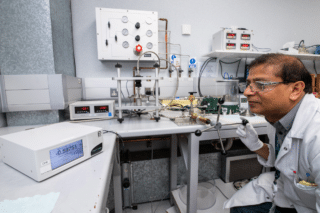The manufacturing industry is one of the business sectors that is adopting new technologies most rapidly to improve productivity and performance: automation, robotization, the Internet of Things (IoT), artificial intelligence (AI)-based systems, data sciences, and so on. Its digital transformation is underway, and 80% of business leaders are planning to increase their investment in technology to alleviate current challenges, including inflation, skills shortages, and unpredictable supply chains.
By Frédéric Aguilar, Technical Director France – Extreme Networks
In this new industrial revolution, network technologies play a key role in supporting every company’s business. Today, the digitization of the sector is subject to a real interconnection challenge. To successfully make the transition to the industry of the future, or Industry 4.0, connected and intelligent, what are the technologies and avenues to be explored right now?
Nearly all technologies in a manufacturing environment rely on the network – wired and/or wireless – therefore it must be secure, flexible, and easy to manage. This infrastructure is the backbone that will enable the company to develop, operate, and succeed in its digital transformation. It is around this infrastructure, and thanks to its agility, that professionals will be able to easily integrate the most appropriate intelligent technologies to enhance the performance of their industrial systems.
Intelligent Technologies
Those technologies include:
1. Automation. Thanks to the combined power of machine learning and AI, automation enables systems to learn and improve, minimizing downtime and limiting human error. By choosing to optimize its manufacturing and control processes, a company can ensure that it improves the efficiency of its industrial facilities while reducing costs and increasing production rates. This technology also improves overall productivity, as it enables potential problems to be resolved before they have an impact on production lines. It saves time and allows IT teams to concentrate on their core business.
2. Fabric Networks. This type of network, where nodes are connected to each other via switches, ensures that the best bandwidth is allocated to each node. Fabric networks enable high levels of device/user control and management, remote device configuration, monitoring of network status and alarms, user access control, faster problem detection and resolution, reduced risk of a lateral cyberattack thanks to hyper-segmentation, and so on.
3. Wi-Fi 6E. New technologies such as augmented reality, networked robotics, or the use of wireless sensors essential to manufacturing processes require reliable, high-performance Wi-Fi connectivity, with features and bandwidth that only Wi-Fi 6/6E can offer. It meets the requirements of wireless devices, which are growing exponentially in the industry, are more powerful, and use applications that are very demanding in terms of network transmission capacity. Wi-Fi 6E access points adapted to the hostile environments and extreme environmental conditions of industrial facilities and logistics warehouses can significantly improve application and device performance.
4. Digital twins. Applied to network management, this technology, which is particularly useful in critical manufacturing environments where the network must be always 100% operational, makes it possible to duplicate the network of a production site or an entire system to carry out simulations/tests and anticipate any decision-making. This gives IT departments the ability to identify and resolve configuration problems before they affect production, virtually test network equipment before it goes into production, improve network reliability, reduce maintenance tasks, reduce latency, and improve overall network performance. This technology is a powerful tool that is becoming a must-have for all corporate IT departments.
Annual Growth Rate of 1.5%
More than a third of manufacturers who have begun their digital transformation have recorded an annual growth rate of 1.5% (36%). New technologies applied to industrial processes, such as IoT, cloud and AI/ML, are truly changing the rules of the game in this sector. They enable large quantities of data to be collected and analyzed in real-time, making it possible to optimize processes and improve product quality.
By analyzing this data, industries can increase their resilience and leverage this information to overcome supply chain and production challenges. The ability to exploit all the information provided by network data is essential to improve decision-making, anticipate problems before they occur, and maintain a stronger competitive edge.
To stay ahead of the industry, manufacturers need a network architecture that is sufficiently robust to support the current and future technology they rely on to drive toward their goals.











